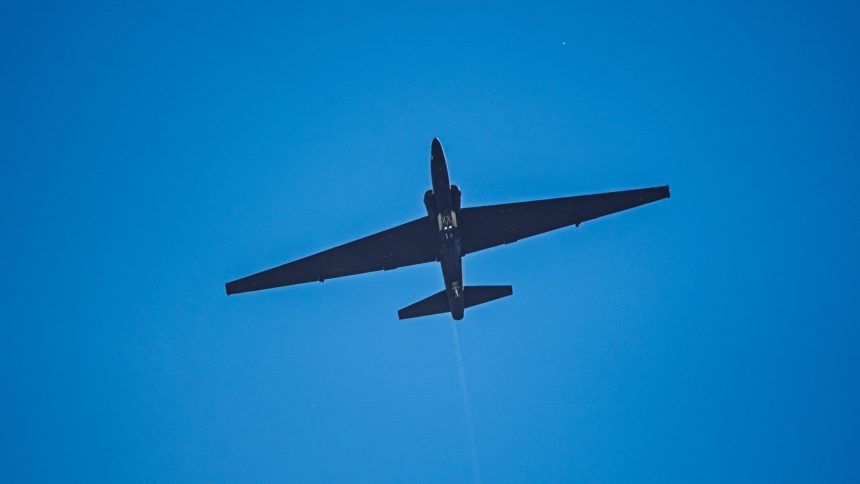80-1099 was photographed in flight for the first time in 17 years after being heavily damaged in a hydrazine fire in 2008.
Aviation enthusiasts captured the aircraft in flight from Palmdale Airport, California, with the frame noticeably looking clean and ‘fresh’ compared to those that have been in regular use. Steven Fortson, who posts on X/Twitter as Zaphod58, reports that the U-2’s first post-rebuild flight took place on Aug. 18, 2025. The repair and rebuild took place at Site 2 at Palmdale’s famous Plant 42, where the U-2 fleet receives Programmed Depot Maintenance (PDM).
80-1099 took off from the facility, which shares an airfield with Palmdale Airport, and spent around 1-2 hours in flight before returning. There will likely be several more test flights before the aircraft is certified as ready to rejoin the operational fleet.
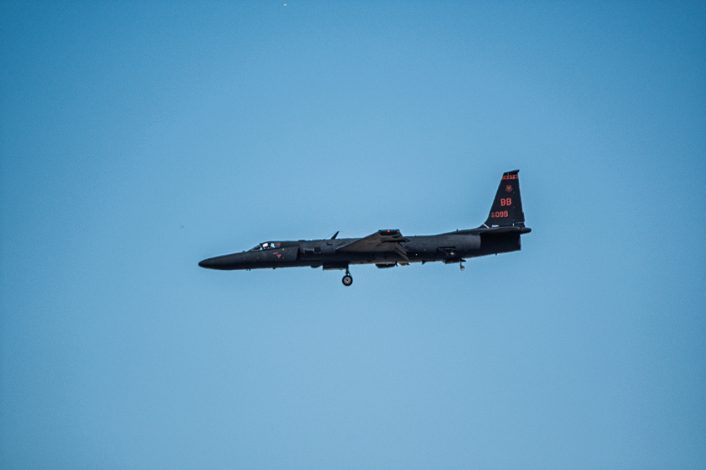
Delivered as a Lockheed TR-1A in 1989 before being re-designated along with the rest of the fleet as a U-2R in 1992, then subsequently upgraded to U-2S standard in 1995, 80-1099 was the final airframe in the U-2 family to ever roll off a production line. Throughout 80-1099’s service career the airframe saw stints at RAF Fairford, UK, Osan Air Base, South Korea, and at Al Dhafra Air Base in the United Arab Emirates.
In our recent exclusive interviews with U-2 pilots at EAA AirVenture Oshkosh, Lt. Colonel Jon “Huggy” Huggins recalled a flight in 80-1099 on the opening day of Operation Desert Storm. Flying a high altitude photographic reconnaissance sortie, Huggins’ aircraft was ‘lit up’ by an Iraqi air defence missile radar. It isn’t clear whether a missile was actually fired as none were seen from the cockpit.
Last one off the line, taking to the skies for the first time since 2008 pic.twitter.com/HmbON0LGCV
— TaskForce23 (@Task_Force23) August 20, 2025
It was at Al Dhafra in 2008 when the aircraft was significantly damaged by a fire which occurred during maintenance. The fire was sparked by an inadvertent activation of the aircraft’s Emergency Start System (ESS), releasing extremely toxic and flammable hydrazine. Hydrazine powered ESS are used on the U-2 and the F-16 to provide an emergency in-flight engine restart function, vital for the single engined airframes. While it performs an important function, the extremely toxic nature of the substance means extensive precautions must be taken whenever there is a risk of exposure.
Initial attempts by U.S. Air Force personnel to repair 80-1099 following the fire were unsuccessful, and the aircraft was subsequently delivered to Robins AFB, Georgia, for ground use. By 2018, the airframe was earmarked for repair by Lockheed Martin’s own engineers in Palmdale, California.
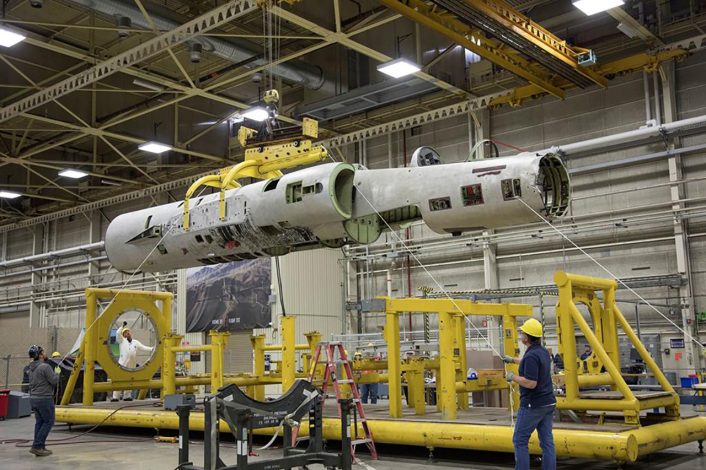
Many NATO airfields, even those which do not routinely accommodate F-16s or U-2s, will have a specific subsection of their airfield operations manuals detailing the preparations necessary for handling these aircraft. Notably, the single engined F-35 eschews a hydrazine powered system in favor of the Integrated Power Pack (IPP) – powered by regular jet fuel, the IPP functions both as an emergency power pack as well as an auxiliary power unit (APU).
The toxic fuel is also used extensively in spaceflight, usually powering reaction control system (RCS) thrusters that allow spacecraft to maneuver where there is little to no atmosphere. This includes NASA’s Space Shuttle as well as the U.S. Space Force’s X-37B spaceplanes, as demonstrated by the protective gear worn by personnel working with the latter after returning to Earth.
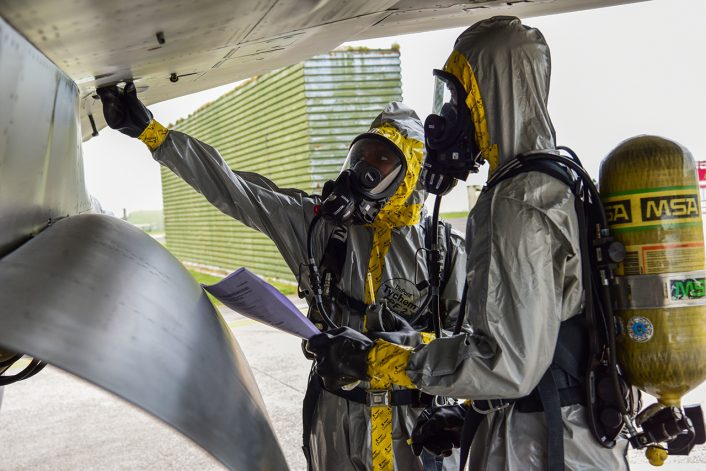
U-2’s Proposed Withdrawal
The decision to repair the stricken U-2 came about around the same time that the aircraft was granted a reprieve from impending retirement. New upgrades were developed for the U-2 fleet with a view to extending both its capabilities and its service life. However, at the time of writing this article and short of yet another reprieve, the U-2 is scheduled to be withdrawn from service in 2026. Returning 80-1099 to service after seventeen years confined to the ground might simply be an indicator of a delayed rebuild, but it might also signal a currently unannounced intent to continue operating the Dragon Lady beyond its penciled-in sundown.
Despite plans for its retirement the U-2 continues to fly missions, here up close at RAF Fairford. More vids at link: https://t.co/pjzCLRW2es pic.twitter.com/MQP8AGVzMd
— Saint1 (@Saint1Mil) January 8, 2025
A number of U-2 airframes have already been retired from service ahead of the planned withdrawal, but with the changing directions in defense spending that have come about since the change in administrations it is difficult to be certain that existing plans will be adhered to.
Although the U-2’s initial purpose – high-altitude photo reconnaissance – is now well covered by huge networks of intelligence satellites, the U-2’s various configurations provide many other capabilities to the U.S. military. Additionally, unlike satellites, a U-2’s flight path and operational tasking can be changed at will, even when the aircraft is airborne, assisting with the capture of intelligence that would otherwise have been protected by a foe’s knowledge of satellite capabilities and orbits. The U-2 offers a greater payload than the RQ-4 Global Hawk that initially was touted as its replacement. The last sortie flown using the U-2’s optical bar camera – which utilised photographic film – took place in 2022.
Newer, clandestine unmanned aircraft like the ‘RQ-180’ might offer similar intelligence gathering capabilities, but by virtue of being notionally classified aircraft they, unlike the U-2, cannot operate routinely from or over locations where they would be seen by prying eyes. Efforts have been made, especially in the UK when U-2s fly operational sorties from RAF Fairford, to protect some of the U-2’s missions from hostile intelligence gathering, but this is largely limited to open requests by authorities to aviation enthusiasts to withhold discussing the sorties until they return to the base.
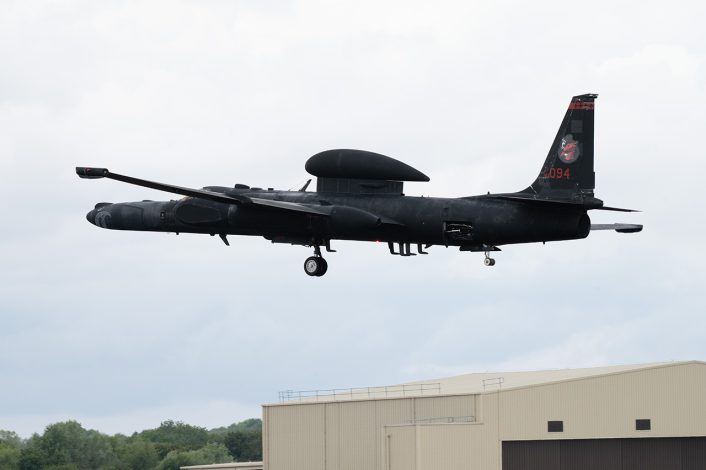
Rather than protecting the aircraft itself, this is most likely related to protecting the knowledge of which specific combination of sensors and communications equipment is being carried on that day’s flight. While the U-2 can be fairly easily tracked on radar, it is much more difficult to tell the aircraft’s payload without actually sending interceptors to visually inspect the airframe. The latter is mitigated by the U-2’s operational altitude and ability to utilize allied airspace which would be out of bounds to, for example, Russian interceptor aircraft. Without knowing which sensors are being used for a particular flight, it is more difficult for effective counter-intelligence strategies to be employed.
It can also affect a foe’s operational effectiveness. Even if an intelligence aircraft nearby is not presently equipped, for example, to gather intelligence on radar emissions, the presence of the aircraft and potential that it is equipped for such a role could encourage the opposing force to degrade or disable their radar systems and shield their performance.
Thank you to Steven Fortson/zaphod58 for providing his images as well as additional information for this article.

